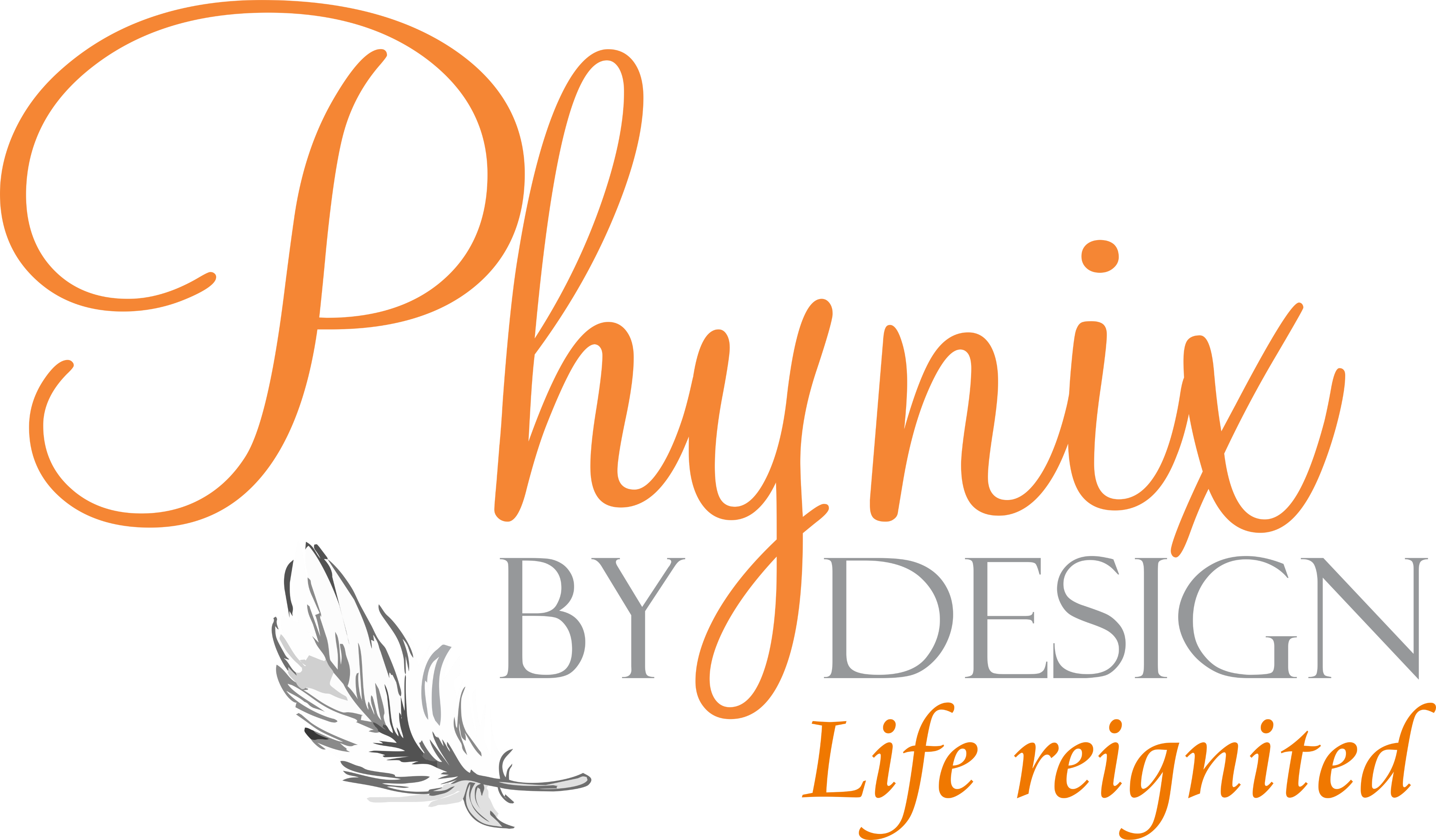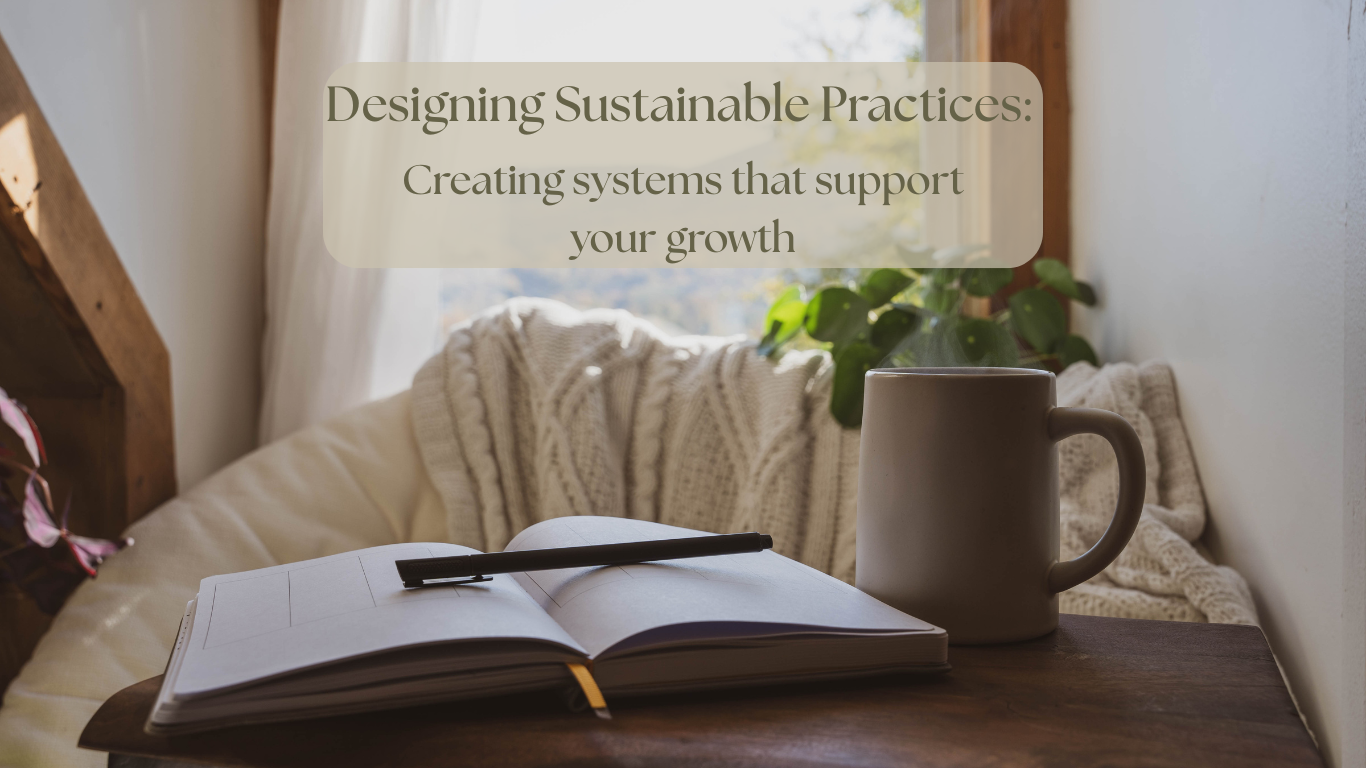Hello again!
How has your week been exploring the foundations of nurturing? I’ve been thinking about you and wondering what discoveries you’ve made as you’ve begun reconnecting with the practices that genuinely support your growth.
This week, we’re diving deeper into designing sustainable nurturing systems – creating the environments, rituals, and boundaries that make growth natural rather than forced. I’m excited to share these insights because I’ve witnessed how transformative it can be when we shift from isolated practices to integrated systems of nurturing.
The Power of Nurturing Systems
Have you ever noticed how much easier it is to maintain healthy habits in certain environments? Perhaps you exercise more consistently when visiting a particular place, or find yourself naturally eating better in certain settings. This isn’t coincidence – it’s evidence of how powerfully our systems and environments shape our behaviour.
I remember working with a client – let’s call her Sarah – who struggled for years with morning stress and rushed beginnings that affected her entire day. Rather than simply trying harder to “be more organised,” we worked together to design a nurturing morning system – adjusting her physical space, creating simple rituals, and establishing supportive boundaries. Within weeks, her mornings transformed from sources of stress to foundations of wellbeing that positively influenced everything that followed.
This is the difference between isolated practices and nurturing systems. While individual practices are valuable, they often require significant willpower to maintain. In contrast, well-designed systems make nurturing the path of least resistance rather than something you have to force yourself to do.
Elements of Sustainable Nurturing Systems
Through years of working with clients on sustainable transformation, I’ve found that the most effective nurturing systems typically incorporate these key elements:
1. Intentional Rituals
Rituals are different from routines. While routines are primarily about efficiency, rituals infuse meaning and presence into everyday actions. Even the simplest activities can become nurturing rituals when approached with intention.
Morning rituals are particularly powerful because they set the foundation for your entire day. A nurturing morning doesn’t need to be elaborate – even 5 minutes of intentional practice can transform how you enter your day:
• Choose 1-3 small practices that genuinely nurture you
• Link them to something you already do every morning
• Focus on how they make you feel, not just what they accomplish
• Make them so simple you can do them even on difficult days
• Protect this time from digital intrusions when possible
For example, one client created a 5-minute ritual of placing her feet mindfully on the floor, taking three conscious breaths, naming three things she felt grateful for, and setting one nurturing intention for the day. This modest practice created a sense of grounded presence that influenced her entire day.
What small morning practice might create ripple effects of nurturing throughout your day?
2. Nurturing Environments
Our physical spaces are constantly giving us cues about how to feel and behave. When we design our environments intentionally, they can become powerful supporters of our nurturing intentions.
Try this nurturing space assessment:
• Identify one area where you spend significant time
• Notice how this space currently makes you feel
• Consider what elements support your wellbeing
• Identify what elements might be depleting your energy
• Choose one small adjustment that would enhance the nurturing quality
Simple nurturing elements might include:
• Natural elements (plants, natural materials, nature views)
• Meaningful objects that inspire positive emotions
• Organisational elements that reduce cognitive load
• Comfort features that support physical wellbeing
• Sensory elements that please your senses
One client transformed her workspace by simply moving her desk to face a window, adding a small plant, and creating a dedicated “nurturing corner” with a comfortable chair, inspiring books, and a beautiful journal. These modest changes completely shifted how she felt in the space and naturally encouraged more nurturing behaviours.
What one small change to your environment might better support your nurturing intentions?
3. Nature Connection Practices
In our increasingly indoor, digital lives, reconnecting with nature provides profound nurturing that no technological substitute can match. Research consistently shows that nature connection improves physical health, emotional regulation, cognitive function, and spiritual wellbeing.
The good news? You don’t need extended wilderness excursions to benefit from nature’s nurturing effects. Small, consistent connections create meaningful benefits:
• Take a 10-minute “sensory walk” noticing what you see, hear, smell, and feel outdoors
• Bring natural elements indoors with plants, natural materials, or nature sounds
• Eat a meal outside with full presence and appreciation
• Watch clouds, stars, or birds with childlike curiosity
• Place your bare feet on grass, sand, or soil for a few grounding minutes
• Tend to a plant, garden space, or natural area with care
Our bodies evolved in natural environments and still respond to them at a deep physiological level. Even brief nature connections can lower stress hormones, improve immune function, and enhance mood.
How might you incorporate small, consistent nature connections into your weekly rhythm?
4. Digital Boundaries
In our connected world, intentional digital boundaries create essential space for authentic growth and nurturing. This isn’t about rejecting technology, but about ensuring it serves your wellbeing rather than depleting it.
Try this digital wellbeing assessment:
• Notice when technology nurtures you (connecting with loved ones, learning, inspiration)
• Notice when it depletes you (comparison triggers, mindless scrolling, stress-inducing news)
• Identify your current digital boundaries (if any)
• Consider what additional boundaries might support your nurturing intentions
Simple digital wellbeing practices:
• Create tech-free zones (bedroom, dining table, nature time)
• Establish tech-free times (first hour of day, meal times, before bed)
• Use intentional engagement practices (set purpose before opening apps)
• Adjust notification settings to minimize interruptions
• Practice regular digital detox periods (hours or days)
One client discovered that simply keeping her phone in another room during her first hour awake and last hour before sleep dramatically improved her sleep quality, morning focus, and overall sense of agency in her life. This modest boundary created space for genuine nurturing that had been constantly interrupted by digital distractions.
What one digital boundary might create more space for nurturing in your life?
5. Obstacle Navigation Strategies
Every nurturing journey encounters obstacles. The difference between sustainable progress and frustration often lies not in avoiding challenges but in how we navigate them when they inevitably arise.
Try developing this obstacle navigation approach:
• Identify one common challenge in your nurturing practice
• Consider it with compassionate curiosity rather than judgment
• Ask: “What need or wisdom might this obstacle be pointing to?”
• Develop multiple possible responses (Plan B, C, and D options)
• Create a “minimum viable practice” for challenging times
For example, one client who wanted to establish a nurturing journaling practice kept encountering the obstacle of “not having enough time.” Rather than abandoning the practice, we developed a scaled approach:
• Optimal practice: 15 minutes of reflective writing
• Plan B: 5 minutes of bullet-point journaling
• Plan C: One written sentence capturing a key insight
• Minimum viable practice: 10 seconds to draw a simple symbol or emoticon representing the day
This flexible approach allowed her to maintain consistency even during hectic periods, rather than falling into all-or-nothing thinking.
What’s one obstacle to your nurturing practices, and how might you develop a flexible response strategy?
Your Week 2 Challenge
This week, I invite you to focus on creating one nurturing system using the elements we’ve explored. Rather than adding isolated practices, consider how you might design an integrated approach that makes nurturing natural rather than forced.
For example:
• Design a simple morning ritual that sets a nurturing foundation
• Create one nurturing space that supports your wellbeing
• Establish a sustainable nature connection practice
• Implement one meaningful digital boundary
• Develop a flexible approach for navigating common obstacles
Remember, sustainable nurturing systems don’t emerge overnight. Start with small, achievable adjustments rather than complete overhauls. The goal is progress, not perfection.
As you move through this week, notice with gentle awareness:
• Which system elements most powerfully support your nurturing intentions?
• What resistance arises as you implement these changes?
• How does having supportive systems affect your need for willpower?
These observations will guide your continuing development of sustainable nurturing practices.
Join the Journey
I’m loving walking this path with you! Throughout this week, I’ll be sharing regular practices on social media to support your nurturing journey Follow along on Instagram, Facebook, or LinkedIn for regular inspiration and practical exercises.
I’d love to hear about your experiences with creating nurturing systems. What environmental adjustments have most supported your wellbeing? What rituals create foundations for your day? What digital boundaries create space for authentic nurturing? Comment through socials or reach out directly to share your journey.
Remember, sustainable transformation emerges not from isolated efforts but from integrated systems that make nurturing the natural path rather than something you have to constantly push yourself to do. When you create the right conditions, growth happens with more ease and joy.
With warmth and belief in your nurturing journey,
Gemma-Lee
About the Author:
Gemma-Lee Harvey is a Holistic Counsellor and Lifestyle Coach based on Australia’s Sunshine Coast. With a diverse background spanning psychology, business, counselling, and coaching, she creates a nurturing space for exploring one’s full potential. Her gentle yet practical approach kindles the transformative spirit within, guiding individuals through life’s challenges as they rise through empowerment.
Contact:
🌐 www.phynixbydesign.com.au
☎ 07 5493 6742
📱 0448 562 814
🏢 Brightwater Wellness Hub, Shop 7E 69-79 Attenuata Drive, Mountain Creek QLD 4557

